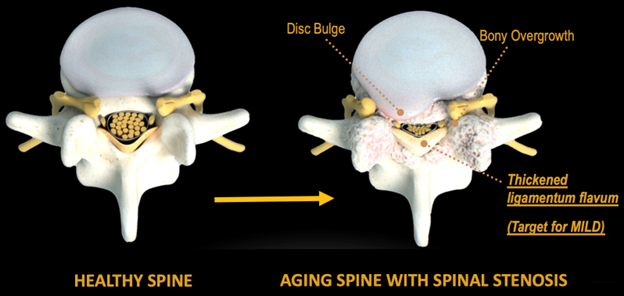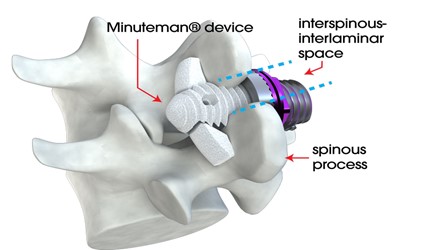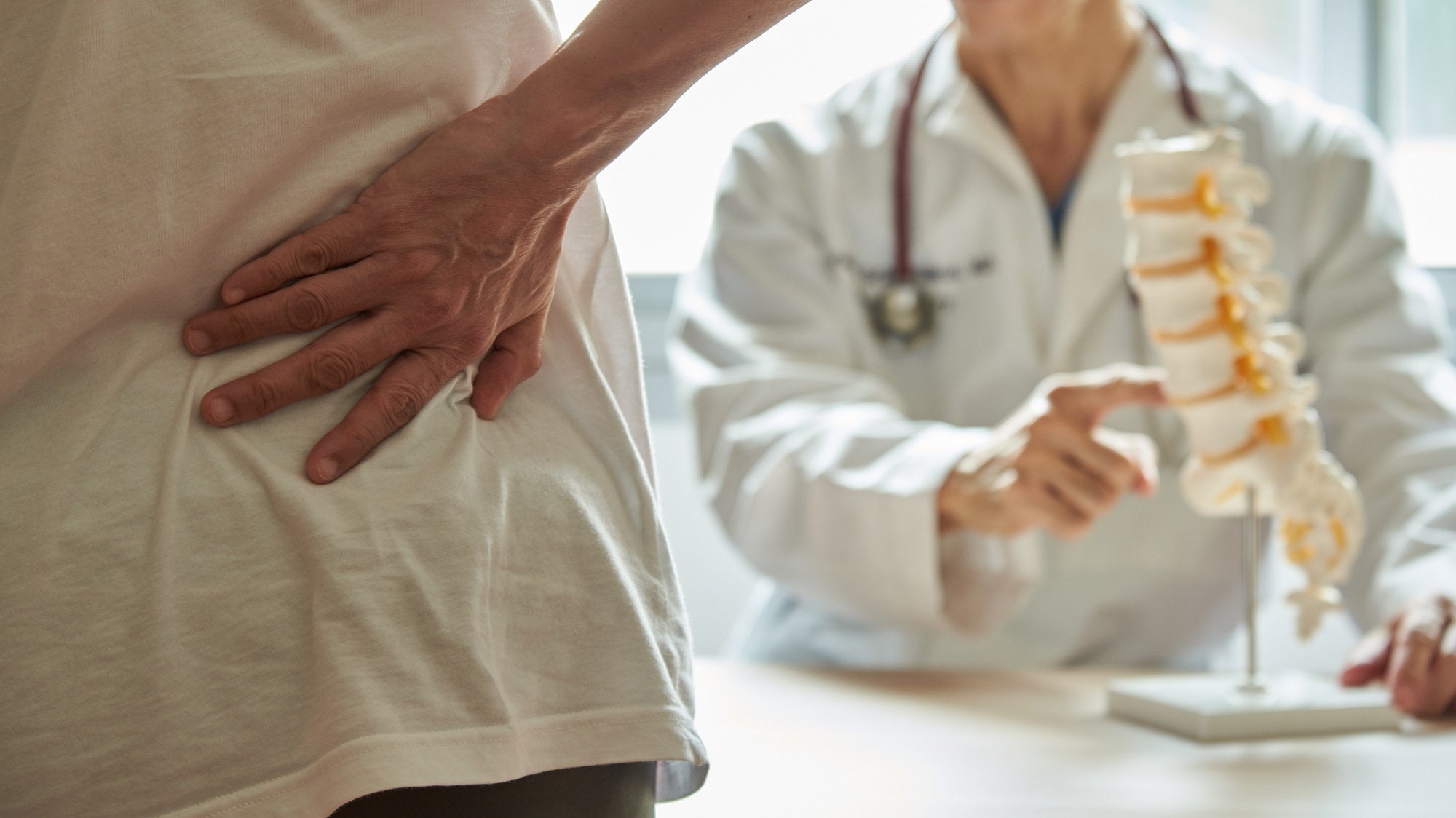Spinal Stenosis
What is Lumbar Spinal Stenosis (LSS)?
Lumbar Spinal Stenosis is a common cause of low back and leg pain that most commonly affects people aged 50 and older. Over 20% of people over the age of 60 have LSS. Stenosis is simply another word for narrowing that can put pressure on the nerves of the spine.

spinal stenosis. The MILD procedure specifically targets the thickened ligament that
compresses nerves and causes symptoms (pain) related to this condition.
Learn more about LSS and various treatment methods below.
This condition that affects the central canal of the spine often leads to pain, burning, numbness, tingling or a sensation of heaviness in the back, buttocks, thighs and/or legs. These symptoms become worse with standing up straight and walking but are improved by sitting down or leaning forward. LSS can also disrupt sleep given how symptoms are closely related to positioning. Discussing your symptoms with a physician is the first step.
Diagnosis is based largely on the history and physical examination but should be confirmed with advanced imaging. This is where referral to a qualified pain specialist is often an appropriate next step.
Historically, treatment options consisted of pain medications, physical therapy and steroid shots. When patients did not find relief with these options, the only alternative was open surgery. Fortunately, today there are new outpatient treatment options that do not require open surgery and fills this therapeutic gap between injections and traditional surgery.
Depending on the specific cause of LSS there are a couple options. If a thickened ligament is shown to be compressing nerves on MRI, then minimally invasive lumbar decompression is a good option.
Minimally Invasive Lumbar Decompression, known as the MILD procedure, is an outpatient, quasi-surgical, minimally invasive procedure requiring approximately 45 minutes to complete without general anesthesia. The MILD procedure specifically addresses a leading cause of this condition: ligament overgrowth that compresses nerves (confirmed with MRI). We utilize x-ray guidance to remove bone fragments and thin-out the bulky ligament with specially-designed instruments—making more space for the nerves and relieving the symptoms of LSS.
Numerous clinical studies support the efficacy of the MILD procedure. Upwards of 85% of patients find meaningful relief and improved function after MILD. Patients usually see improvement in standing time, walking distance but also have less of the pain and burning associated with spinal stenosis. To learn more about the MILD procedure you can go to www.mildprocedure.com.
Before moving on to open surgery, the next step is usually to consider an interspinous stabilization device. In short, these devices prevent or “block” the narrowing of the central canal that occurs when patients stand upright. These devices can still be safely implanted in a minimally invasive fashion through small instruments instead of larger, open incisions. This is a minor outpatient surgery that is still less invasive than traditional surgical options.
Yes, and it depends on the device used. The Minuteman procedure is one particular device that truly stabilizes the spine while reducing nerve compression. So, it can also address other causes contributing to back and leg pain such as slippage of bones (spondylolisthesis), relieve stress on the joints of the spine (facet arthropathy), and even help other types of nerve stenosis/impingement (not just central stenosis).
Minuteman has been shown in clinical studies to have a very low complication rate. This is especially important when you consider the high complication rate of traditional spine surgery in older (80+ year old) patients. Thus, Minuteman represents yet another valuable treatment option previously not available to many patients.

“spinous process” and is safely clamped down in position.
This helps open up space between bones (verterbrae),
relieving pressure on nerves, taking stress off joints and
other bones, and, importantly, prevents the narrowing
of the spine that occurs with standing and walking.
Meeting with a board-certified interventional pain physician who is well-versed in all minimally invasive treatment options, can be helpful. Our providers can perform a comprehensive evaluation, looking at all sources of pain, and discuss your imaging to collaboratively identify the best treatment plan for each individual patient.

